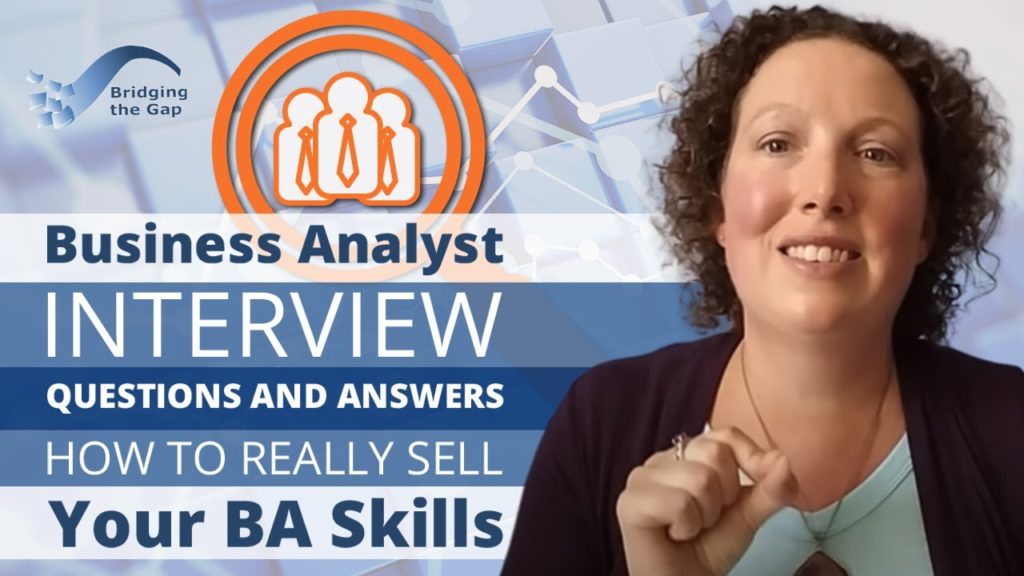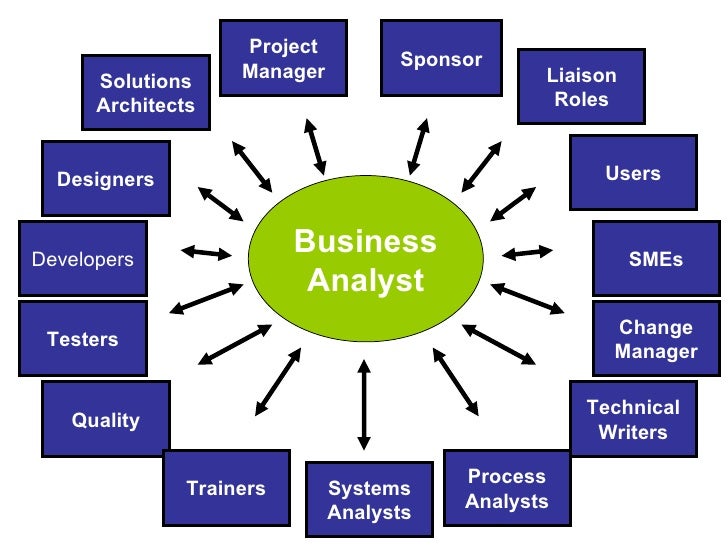How to switch from sales to business analyst? It’s a surprisingly smooth transition for many, leveraging transferable skills and strategic career pivoting. This guide reveals how your sales experience—from handling objections to understanding customer needs—directly translates into the core competencies of a successful business analyst. We’ll explore the essential skills gap analysis, educational paths, networking strategies, and portfolio building techniques to help you confidently navigate this career change and land your dream business analyst role.
This comprehensive guide provides a step-by-step roadmap, covering everything from identifying transferable skills and addressing skill gaps to crafting a compelling resume and acing the interview. We’ll explore how to leverage your sales background to highlight your problem-solving abilities and data-driven decision-making, ultimately demonstrating your value to prospective employers. Prepare to transform your sales expertise into a thriving business analysis career.
Transferable Skills Assessment

Making the transition from sales to business analysis requires recognizing and leveraging your existing skillset. Many abilities honed in a sales environment translate directly to the demands of business analysis, creating a surprisingly smooth career path for those willing to highlight their transferable skills. This section will detail key transferable skills, demonstrating how sales experience directly benefits a business analyst role.
Key Transferable Skills from Sales to Business Analysis
Three core skills from a sales background prove highly valuable in business analysis: communication, problem-solving, and requirements gathering. Effective communication is crucial for both roles, facilitating clear and concise interactions with clients and stakeholders. Problem-solving is inherent in both sales (overcoming objections, closing deals) and business analysis (identifying and resolving process inefficiencies). Finally, the process of understanding client needs in sales directly mirrors the requirements gathering phase of business analysis.
Translating Objection Handling to Requirements Gathering
Handling objections in sales involves actively listening, understanding the root cause of the objection, and crafting a solution to address the concern. This process directly parallels requirements gathering in business analysis. Instead of addressing sales objections, business analysts address stakeholder concerns regarding a project or system. By actively listening to stakeholder needs and clarifying ambiguities, a business analyst can effectively gather accurate and comprehensive requirements, just as a salesperson addresses and overcomes objections to close a deal. For example, a salesperson might encounter an objection about pricing; a business analyst might encounter an objection about a proposed system’s functionality. In both cases, effective communication and problem-solving skills are vital to reaching a successful outcome.
Comparing Problem-Solving Approaches in Sales and Business Analysis
Both sales and business analysis employ problem-solving, but their approaches differ in focus and methodology. In sales, problem-solving often involves finding creative solutions to close a deal, focusing on immediate needs and overcoming customer objections. For example, a salesperson might offer a discount or a customized solution to address a price objection. In business analysis, problem-solving is more systematic and analytical, involving identifying root causes, analyzing data, and proposing solutions that address long-term needs and align with organizational goals. For example, a business analyst might use data analysis to identify inefficiencies in a workflow, proposing a system redesign to improve productivity and reduce costs. While both approaches require critical thinking and creative solutions, the sales approach is more immediate and customer-focused, while the business analyst approach is more systematic and data-driven.
Sales and Business Analyst Responsibilities and Skills Comparison
| Task | Sales Skill | Business Analyst Skill | Transferable Skill |
|---|---|---|---|
| Understanding Client Needs | Active Listening, Needs Assessment, Questioning Techniques | Requirements Elicitation, Stakeholder Analysis, Documentation | Communication, Empathy, Active Listening |
| Overcoming Objections | Objection Handling, Negotiation, Persuasion | Conflict Resolution, Requirements Negotiation, Prioritization | Problem-Solving, Communication, Negotiation |
| Presenting Solutions | Presentation Skills, Storytelling, Closing Techniques | Documentation, Communication, Presentation of Findings | Communication, Presentation Skills, Persuasion |
| Analyzing Data (to understand sales performance or customer behavior) | Sales Data Analysis, Trend Identification | Data Analysis, Process Modeling, System Analysis | Analytical Skills, Data Interpretation |
Education and Skill Gaps

Transitioning from sales to business analysis requires bridging a knowledge gap. While your sales experience provides valuable transferable skills, a strong foundation in data analysis, business process modeling, and relevant software tools is crucial for success. This section Artikels the necessary educational steps and resources to acquire the missing skills.
Successful business analysts possess a blend of hard and soft skills. While your sales background likely equipped you with strong communication and problem-solving abilities, enhancing your technical proficiency will significantly improve your prospects. Focusing on acquiring specific skills and certifications will demonstrate your commitment to this career change to potential employers.
Essential Certifications and Educational Paths
Several certifications can significantly boost your resume and demonstrate your competency in business analysis. The International Institute of Business Analysis (IIBA) offers the ECBA (Entry Certificate in Business Analysis) and CCBA (Certified Business Analysis Professional) certifications, widely recognized within the industry. These certifications typically require a combination of education, experience, and exam completion. Consider pursuing a relevant postgraduate certificate or even a master’s degree in business analytics or a related field if your existing education lacks a quantitative focus. These advanced programs offer a structured curriculum covering advanced statistical techniques and modeling methods.
Resources for Enhancing Data Analysis, SQL, and Modeling Skills
Numerous online resources can help you build the necessary technical skills. Platforms like Coursera, edX, and Udacity offer courses on data analysis, SQL, and various statistical modeling techniques. Look for courses focusing on practical application, including case studies and projects. For example, Coursera offers courses from top universities on SQL databases, data visualization with tools like Tableau, and statistical modeling with R or Python. Bootcamps, while often more expensive, provide intensive, immersive training, allowing you to rapidly acquire in-demand skills. DataCamp and Codecademy also offer interactive courses focusing on data manipulation and analysis.
The Importance of Business Process Modeling Tools (BPMN)
Understanding and applying Business Process Model and Notation (BPMN) is essential for any business analyst. BPMN is a standardized graphical notation used to model business processes. Mastering BPMN allows you to visually represent complex processes, identify bottlenecks, and propose improvements. This is crucial for communicating your analysis and recommendations effectively to stakeholders. Many online courses and tutorials provide comprehensive BPMN training, enabling you to learn the notation and apply it to real-world scenarios. Practicing with case studies will solidify your understanding and build your confidence in using this tool.
Essential Business Analysis Tools and Techniques
Acquiring proficiency in a range of tools and techniques is vital for a successful career transition. The following list highlights some of the most frequently used tools and techniques:
- Data Analysis Tools: SQL, Excel (including advanced functions like pivot tables and VBA), Tableau, Power BI.
- Business Process Modeling Tools: BPMN, Lucidchart, draw.io.
- Requirements Elicitation Techniques: Interviews, surveys, workshops, document analysis.
- Requirements Management Tools: Jira, Confluence, Microsoft Project.
- Modeling Techniques: Use Case Diagrams, Data Flow Diagrams, Entity-Relationship Diagrams.
Proficiency in these tools and techniques will equip you with the practical skills needed to effectively analyze business problems, gather and manage requirements, and deliver valuable insights. Remember that continuous learning is key in this rapidly evolving field.
Networking and Job Search Strategies: How To Switch From Sales To Business Analyst
Transitioning from sales to business analysis requires a strategic approach to networking and job searching. Leveraging your existing sales skills and building new relationships within the business analysis community are crucial for a successful career change. This section Artikels effective strategies to navigate this transition effectively.
Effective Networking Strategies in Business Analysis
Building a strong network within the business analysis field is paramount. Attending industry events, joining professional organizations like the International Institute of Business Analysis (IIBA), and actively participating in online forums and communities are excellent starting points. Connecting with business analysts on LinkedIn and engaging in relevant conversations demonstrates your interest and allows you to learn from experienced professionals. Information interviews, where you informally speak with business analysts to learn about their roles and career paths, can provide invaluable insights and potential leads. Don’t underestimate the power of informational interviews; they are often a more effective way to discover unadvertised opportunities than simply applying to job postings. Remember to always follow up with your contacts after each interaction, expressing gratitude and maintaining the relationship.
Compelling Resume and Cover Letter Examples, How to switch from sales to business analyst
Your resume and cover letter should highlight transferable skills from your sales background. Instead of focusing solely on sales metrics, emphasize skills like communication, problem-solving, client management, and requirements gathering. For example, instead of stating “Exceeded sales targets by 15%,” consider “Successfully managed and exceeded expectations for 15+ key accounts, requiring proactive identification and resolution of client needs.” Your cover letter should articulate your passion for business analysis and demonstrate how your sales experience translates into valuable assets for the role. Tailor both documents to each specific job application, emphasizing the skills and experience most relevant to the job description. A strong resume might include a skills section clearly listing abilities such as stakeholder management, process improvement, data analysis (even basic), and requirements elicitation, showcasing your transferable skills effectively. The cover letter could then elaborate on these skills using concrete examples from your sales experience.
Target Companies for Business Analyst Roles
Many companies value the skills and experience of individuals with sales backgrounds. Technology companies, consulting firms, and financial institutions often seek business analysts with strong communication and client management skills. Examples include companies like Accenture, Deloitte, EY, and various large technology firms (such as Google, Amazon, Microsoft). Researching companies known for internal mobility and career development programs can also be beneficial, as these organizations often promote from within. Start by researching companies that align with your career goals and industry interests, focusing on those with a proven track record of hiring individuals with diverse backgrounds into business analyst roles. Check their career pages and LinkedIn profiles to see what kind of talent they recruit.
Optimizing Your LinkedIn Profile for Business Analyst Roles
Your LinkedIn profile is your digital resume. Use s relevant to business analysis, such as “requirements gathering,” “stakeholder management,” “process improvement,” and “data analysis.” Highlight your transferable sales skills, framing them in the context of business analysis tasks. For example, describe how your experience in managing client relationships translates to effectively managing stakeholders in a project setting. Showcase quantifiable achievements from your sales career, demonstrating your ability to achieve results. A professional headshot and a compelling headline summarizing your skills and career aspirations are essential. Actively engage with content related to business analysis on LinkedIn to increase your visibility to recruiters. By tailoring your profile to the specific s and skills sought by recruiters, you increase your chances of being discovered.
Interview Preparation

Successfully transitioning from sales to business analysis requires meticulous interview preparation. This involves understanding the specific skills and experiences sought by employers, crafting compelling narratives that highlight your transferable skills, and demonstrating a genuine enthusiasm for the role. Effective preparation significantly increases your chances of securing an interview and ultimately, a job offer.
Behavioral Interview Questions and Responses
Behavioral interview questions assess your past performance as a predictor of future behavior. Expect questions probing your problem-solving skills, teamwork experiences, and ability to handle pressure. For example, interviewers may ask about a time you had to manage conflicting priorities, a situation where you failed, or a time you had to influence a decision. Preparing STAR method responses (Situation, Task, Action, Result) for common scenarios is crucial. A strong response concisely describes the situation, your assigned task, the actions you took, and the quantifiable results achieved. For instance, when describing a situation where you had to influence a decision, you might detail a sales scenario where you identified a customer need not initially addressed by your product, presented data to support a revised approach, and ultimately secured a larger deal due to this strategic shift.
Addressing Ambiguity and Teamwork
Interviewers often assess your ability to handle ambiguity and work effectively within diverse teams. Ambiguity is inherent in many business analysis roles; projects often have unclear requirements or evolving priorities. When answering questions about ambiguity, emphasize your structured approach to problem-solving, your ability to gather information effectively, and your comfort level in seeking clarification and adapting to changing circumstances. Highlight experiences where you’ve successfully navigated uncertain situations, perhaps by using a phased approach or iterative problem-solving. Regarding teamwork, emphasize your collaborative spirit, your ability to communicate effectively, and your experience working with individuals from different backgrounds and skill sets. Provide concrete examples from your sales career illustrating successful teamwork and collaboration, such as closing a major deal involving contributions from multiple team members.
Demonstrating Understanding of Business Analysis Methodologies
A strong understanding of business analysis methodologies, such as Agile and Waterfall, is essential. Interviewers will likely assess your familiarity with these frameworks and your ability to apply them to real-world scenarios. Be prepared to discuss the pros and cons of each methodology, and highlight your experience (or potential to quickly learn) using tools like Jira or Confluence, which are commonly used in Agile environments. If you have limited direct experience with these methodologies, focus on transferable skills from your sales background that align with the principles of these frameworks, such as iterative goal setting, data-driven decision making, and collaborative problem solving.
Questions to Ask the Interviewer
Asking insightful questions demonstrates your genuine interest and understanding of the role. Prepare a list of questions that go beyond the basics and reveal your knowledge of the company and the specific challenges of the business analyst position. For example, you could inquire about the team’s current priorities, the types of projects you would be working on, the company’s approach to business analysis, or the opportunities for professional development. Asking about the team’s culture and how success is measured in the role also provides valuable insight. Avoid questions easily answered through basic research; instead, focus on questions that require nuanced answers that reveal the interviewer’s perspective. This demonstrates your proactive nature and genuine interest in the opportunity.






